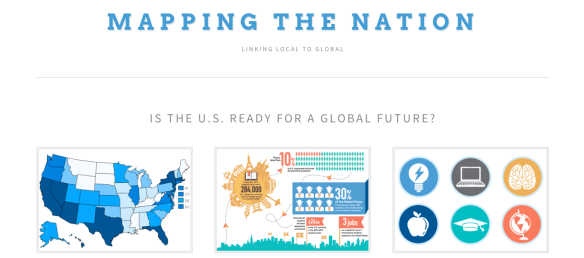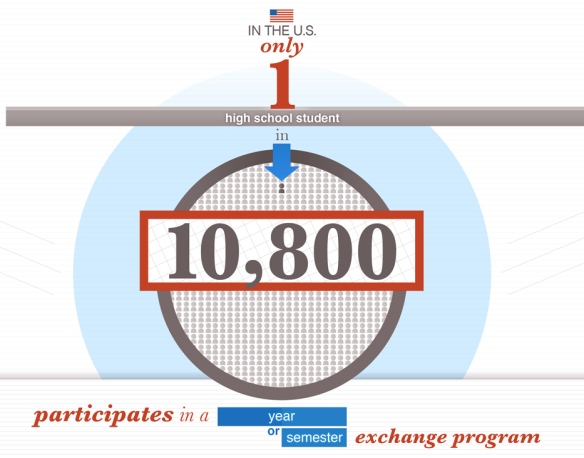 Is the U.S. ready for a global future?
Is the U.S. ready for a global future?
Answers to that question may be found in a fascinating new free online resource that was introduced yesterday by U.S. Secretary of Education Arne Duncan at the U.S. Department of Education as part of International Education Week celebrations. “Mapping the Nation: Linking Local to Global,” is the new state-by-state, country-by-county visual resource from Asia Society, the Longview Foundation for Education in World Affairs and International Understanding, and analytics leader SAS. Created with “nearly 1 million data points,” that “tell a cautionary tale,” the mapping project has set out to “prove what parents, businesspeople, and policymakers already know: American students must be globally competent to succeed in the interconnected 21st century.”
A quick click on the “California” link resulted in an infographic that gives a quick snapshot of the state’s global connections, including a rather surprising (and dismal) fact about the number of California students who take part in study abroad programs:
The “Global Competency” section concludes with a clear and urgent message:
Learning about and with the world occurs within and outside of school, and it is the work of a lifetime. Globally competent students are life long learners. They are able to adapt and contribute knowledge and understanding to a world that is constantly, rapidly evolving.
Global competence is a crucial shift in our understanding of the purpose of education in a changing world. Students everywhere deserve the opportunity to succeed in the global economy and contribute as global citizens. We must fashion a more creative and visionary educational response to the interconnected world of the 21st century, starting now.
The entire site is worth exploring, especially for educators, parents, and students seeking information, tools, and visuals about why we should connect all US schools to schools worldwide, starting now.



